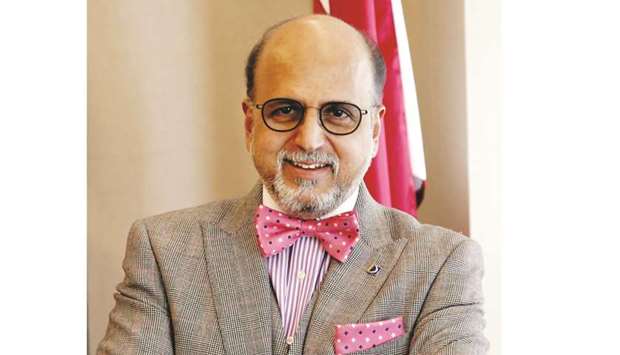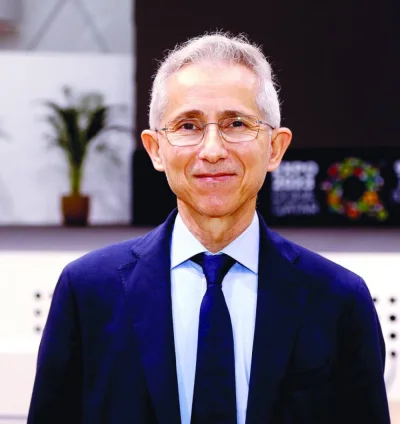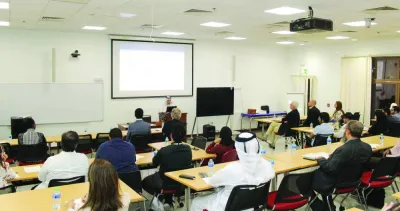In the recent years, Qatar’s hydrocarbon and non-hydrocarbon segment have witnessed significant developments. On the hydrocarbon segment, Qatar Petroleum (QP)’s recent investment decision on the $28.75bn North Field East Project (NFE) will further consolidate Qatar’s position as the top liquefied natural gas producer and exporter in the world. The project will raise Qatar’s LNG production capacity from 77mn tonnes per annum (mmtpa) to 110 mmtpa by 2025. It is expected to start production in the fourth quarter of 2025 and its total production will reach about 1.4mn barrels oil equivalent per day.
The main scope of the Engineering, Procurement and Construction contract is the construction of 4 mega LNG trains with a capacity of 8 MMTPA each. The project will have significant multiplier effects on the local economy with companies in Qatar hugely benefiting from the North Field LNG expansion project. This is a very specialised area that needs very capable engineering construction firms.
This project will generate substantial revenues for Qatar and will have significant benefits for all the sectors of the Qatari economy during the construction phase and beyond. The NFE project represents the first phase of LNG expansion in the State of Qatar, while the second phase, referred to as the North Field South Project (NFS), will further increase Qatar’s LNG production capacity from 110 mmpta to 126 mmpta.
With an expected production start date in 2027, the NFS project involves the construction of two additional mega LNG trains (with a capacity of 8 mmpta each) and associated offshore and onshore facilities.
The NFS project was initiated as a result of Qatar Petroleum’s successful onshore appraisal activities in the North Field and targets the monetisation of gas from the southern sector of the North Field.
On the non-hydrocarbon segment, the Law No 1 of 2019 regulate the investment of non-Qatari capital opens way for ownership. Investment incentives include allocation of land. This has improved the investment climate in Qatar.
In May 2020, the public-private partnership law was introduced. It covered various PPP models including BOT Model. The private sector is expected to leverage from this new law.
The property segment has been witnessing activity after revival from Covid-19 lull. The majority of the office supply is in Lusail, West Bay, and Msheireb. Shell and core offices are also available. The reduced rents for ‘shell-and-core’ space in recent times indicate that companies want to avoid the capital expenditure required for an office fit-out.
In Qatar, co-working space providers are re-imagining the workspace of the future by providing employers with flexibility in terms of space and geography.
In October 2020, Qatar has allowed foreigners to own property. Non-Qatari individuals could own properties in nine areas, up from three before, while the number of areas where foreigners can use real estate subject to usufruct has also been increased to 16, bringing the total number of areas designated for ownership and usufruct by non-Qataris to 25.
New real estate ownership law has boosted demand for apartments in Lusail.
Qatar’s real estate sales market remained buoyant in the fourth quarters of 2020. The lifting of blockade of Qatar by the Saudi-led coalition in January 2022 is expected to provide a timely boost to Qatar’s hospitality sector – although Covid-19 restrictions will delay the return of visitors.
Before the introduction of the blockade, tourism from within the GCC contributed almost 50% of all arrivals to Qatar. Retailers benefited from the full reopening of malls in Q4 2020, following six months of restrictions. The retail property market supply is expected to increase in 2021.
The Qatar Hospitality sector is going to witness significant activity in future. The FIFA World Cup 2022 is expected to bring in 1.5mn tourists. New hotels planned in Qatar this year include Banyan Tree Doha, Pullman Doha West Bay, The Plaza Doha and Katara Towers.
On the whole, Qatar economy is becoming buoyant.
* The author is Group CEO of Doha Bank.
This project will generate substantial revenues for Qatar and will have significant benefits for all the sectors of the Qatari economy during the construction phase and beyond. The NFE project represents the first phase of LNG expansion in the State of Qatar, while the second phase, referred to as the North Field South Project (NFS), will further increase Qatar’s LNG production capacity from 110 mmpta to 126 mmpta.
With an expected production start date in 2027, the NFS project involves the construction of two additional mega LNG trains (with a capacity of 8 mmpta each) and associated offshore and onshore facilities.
The NFS project was initiated as a result of Qatar Petroleum’s successful onshore appraisal activities in the North Field and targets the monetisation of gas from the southern sector of the North Field.
On the non-hydrocarbon segment, the Law No 1 of 2019 regulate the investment of non-Qatari capital opens way for ownership. Investment incentives include allocation of land. This has improved the investment climate in Qatar.
In May 2020, the public-private partnership law was introduced. It covered various PPP models including BOT Model. The private sector is expected to leverage from this new law.
The property segment has been witnessing activity after revival from Covid-19 lull. The majority of the office supply is in Lusail, West Bay, and Msheireb. Shell and core offices are also available. The reduced rents for ‘shell-and-core’ space in recent times indicate that companies want to avoid the capital expenditure required for an office fit-out.
In Qatar, co-working space providers are re-imagining the workspace of the future by providing employers with flexibility in terms of space and geography.
In October 2020, Qatar has allowed foreigners to own property. Non-Qatari individuals could own properties in nine areas, up from three before, while the number of areas where foreigners can use real estate subject to usufruct has also been increased to 16, bringing the total number of areas designated for ownership and usufruct by non-Qataris to 25.
New real estate ownership law has boosted demand for apartments in Lusail.
Qatar’s real estate sales market remained buoyant in the fourth quarters of 2020. The lifting of blockade of Qatar by the Saudi-led coalition in January 2022 is expected to provide a timely boost to Qatar’s hospitality sector – although Covid-19 restrictions will delay the return of visitors.
Before the introduction of the blockade, tourism from within the GCC contributed almost 50% of all arrivals to Qatar. Retailers benefited from the full reopening of malls in Q4 2020, following six months of restrictions. The retail property market supply is expected to increase in 2021.
The Qatar Hospitality sector is going to witness significant activity in future. The FIFA World Cup 2022 is expected to bring in 1.5mn tourists. New hotels planned in Qatar this year include Banyan Tree Doha, Pullman Doha West Bay, The Plaza Doha and Katara Towers.
On the whole, Qatar economy is becoming buoyant.
* The author is Group CEO of Doha Bank.



